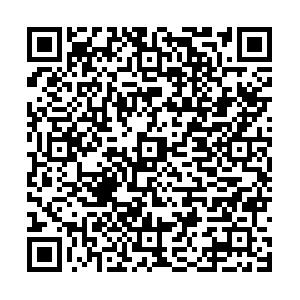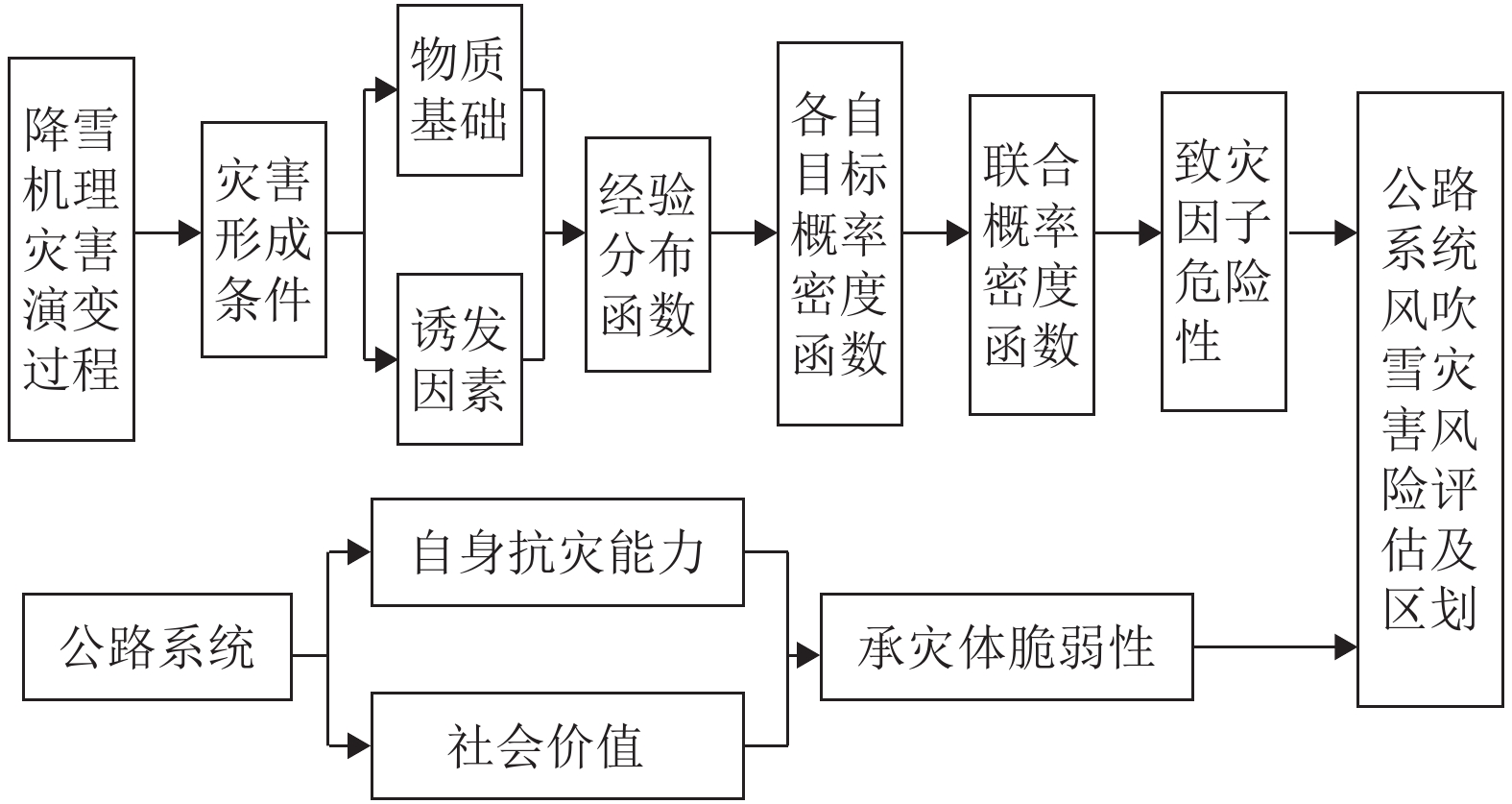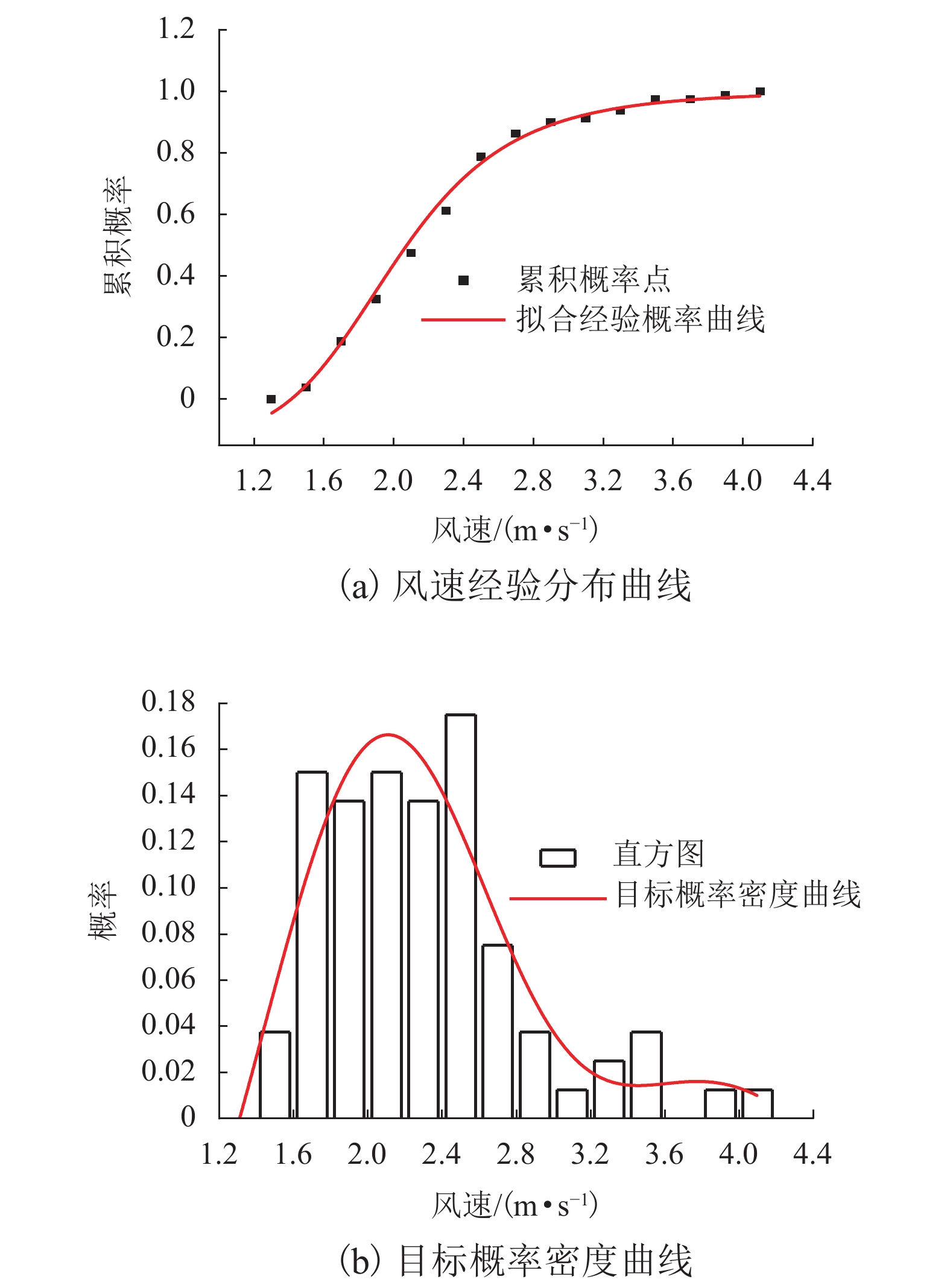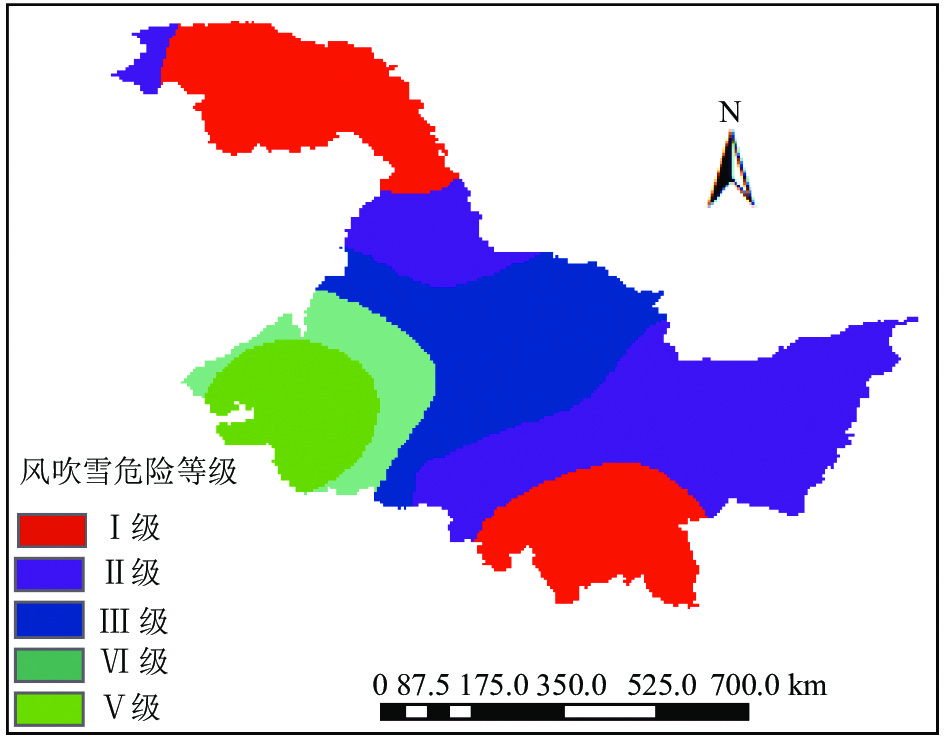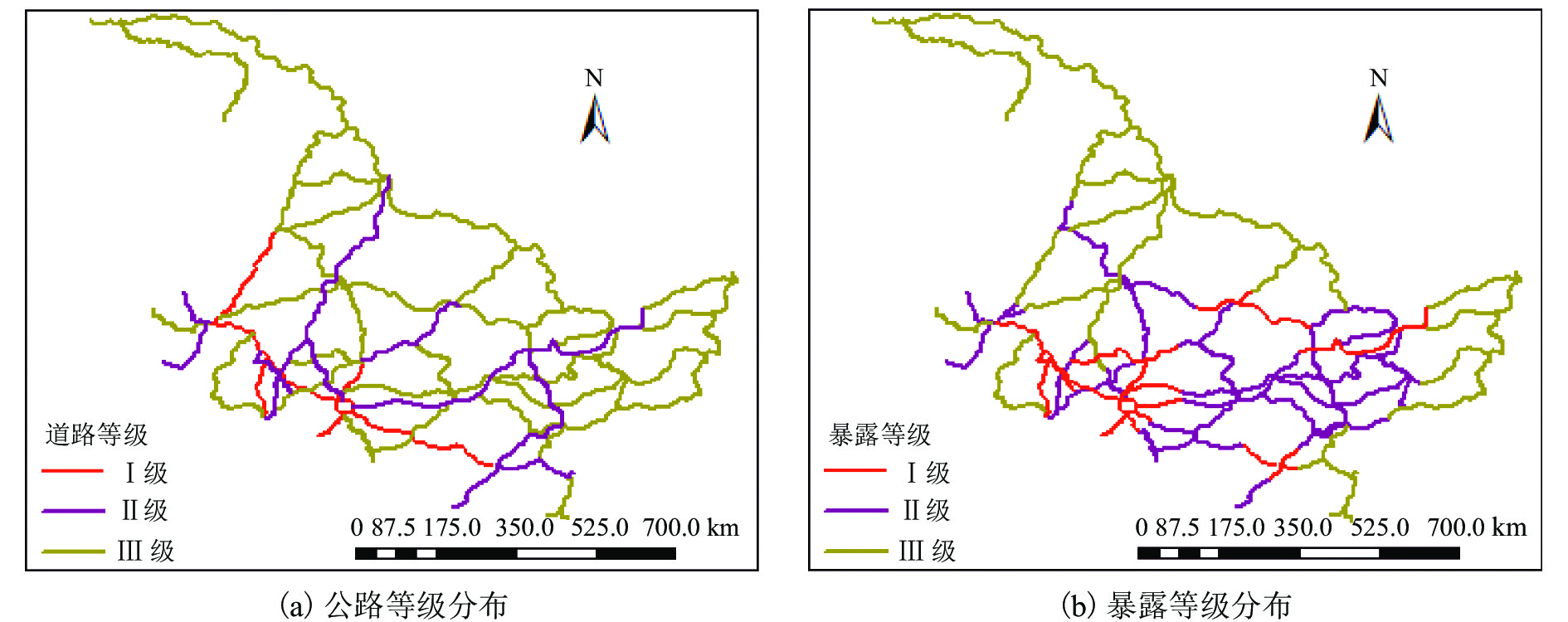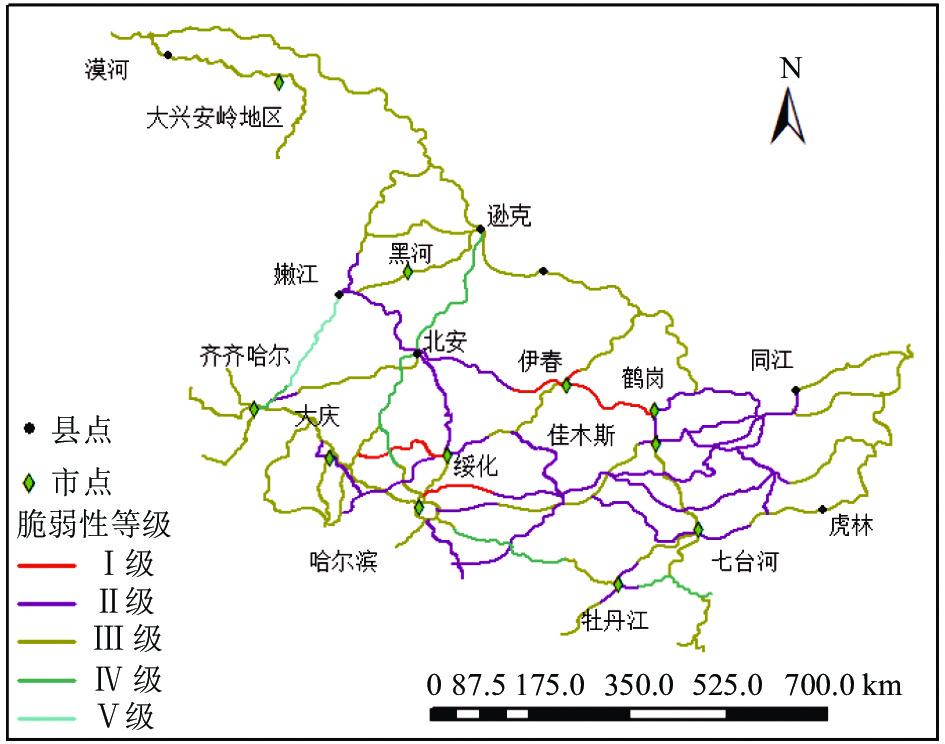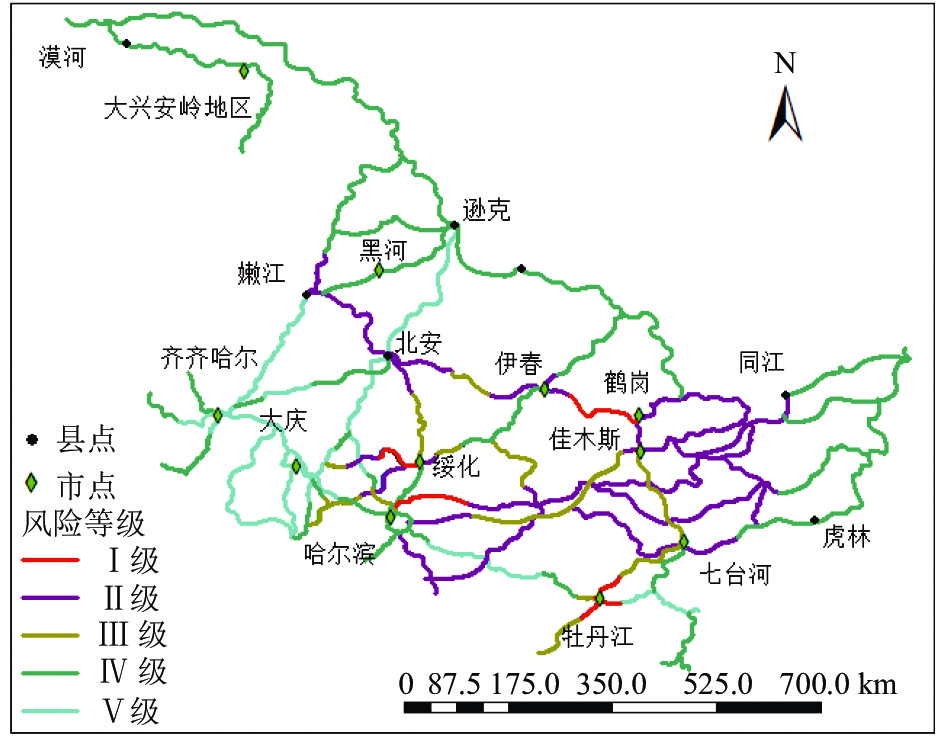Impact of Autonomous Vehicle on Travel Mode Choice Behavior
-
摘要:
无人驾驶汽车对出行者出行选择行为具有重要影响,进而可以影响到城市交通需求、城市空间布局和城市规划. 基于扩展技术接受模型和考虑不同出行者偏好的异质性,建立带潜变量的随机系数Logit模型,研究出行者的出行特征、心理潜变量和个体的社会经济属性对无人驾驶汽车选择行为的影响. 结果表明:与传统的多项Logit模型相比,带潜变量的随机系数Logit模型拟合度更高;不同的出行者对出行费用的偏好具有异质性,在效用函数中,出行费用服从正态分布;无人驾驶汽车选择行为不仅受到出行特征和社会经济属性的影响,而且还受到感知信任、社会规范和行为意向等心理潜变量的影响;降低无人驾驶汽车的出行费用可以提升出行者选择无人驾驶汽车出行的概率.
Abstract:Autonomous vehicles have an important influence on travel mode choices of travelers, which can affect urban traffic demand, urban spatial layout and urban planning. Based on the extended technology acceptance model and the heterogeneity of different travelers’ preferences, a random parameter Logit model (RPLM) with latent variables is established to study the impact of travel characteristics, psychological latent variables and individual socio-economic attributes on the travelers’ behavior of choosing autonomous vehicles. The results show that, RPLM has a better fitting degree than the traditional multiple Logit model. Different travelers have heterogeneous preferences for travel cost, and the travel cost follows a normal distribution in the utility function. Travelers’ choice behavior of autonomous vehicles is not only affected by travel characteristics and socioeconomic attributes, but also by psychological latent variables, such as perceived trust, social norms and behavioral intention. Reducing the travel cost of autonomous vehicle can significantly increase the probability that travelers choose autonomous vehicle.
-
近年来,随着气候环境的急剧变化,自然灾害发生的规模在频度和强度上呈现出愈发增强的趋势[1- 2].尤其是2008年我国南方发生的特大冰雪灾害,其持续时间达两月之久,给当时的交通设施造成了巨大损失.针对自然灾害这种发生随机性大、造成损失强的特点,国家十三五发展规划中明确指出,将多种灾害作用下的灾害风险研究作为优先发展领域. 因此,对灾害风险领域的研究,尤其是开展区域性灾害风险评估是现阶段灾害风险研究的重要组成部分,已成为保障国家健康、高速和可持续发展中不可或缺的一环[3].
现有的交通气象灾害风险研究中,对于雪灾风险的关注点主要在降雪及其导致的路面结冰上[4-7],对伴生性灾害如降雪过程中及降雪后所出现的风吹雪现象对交通的影响研究较少,且主要集中在风吹雪灾害发生机理及演变机制上[8-10],对于寒区这种伴生性灾害的区域性评估并不多见.
因此,针对风吹雪灾害对寒区交通正常运转造成的影响,本研究以风吹雪灾害的发生机理及演变过程为基础,开展区域性交通系统网的风吹雪灾害风险评估,为寒区交通系统的正常运行和相应的防灾减灾工作提供参考.
1. 技术路线及数据来源
1.1 技术路线
对于长时期的雪灾险情,本文尝试建立以月为时间单位的灾害风险评估体系. 首先,从降雪形成的内在机理和风吹雪灾害的演变过程出发探究灾害发生条件,并从灾害发生条件构建宏观影响指标;基于灾害影响因素和灾害发生结果的对应性原则,以影响因素同时发生的概率来表示在此特定条件下风吹雪灾害发生的可能性;结合GIS (geographic information system)技术平台,在研究区交通系统网脆弱性分析的基础上,开展黑龙江省交通系统网的风吹雪灾害风险评估,并完成区域性公路系统网风险区划图的构建. 基于概率分析的风吹雪灾害风险研究技术路线如图1所示.
1.2 数据来源
本文使用的是该研究区内1998—2019年间各市风速和降雪等天气数据,数据来源于黑龙江省统计局和黑龙江省气象信息中心. 地图矢量数据和栅格数据来源于地理空间数据云和国家地理信息系统网.
2. 灾害形成机理
风吹雪是寒区公路雪灾的一种典型表现形式,系风携带雪粒在空气中运动的一种天气现象[11]. 作为我国最北部省份,黑龙江省公路每年都会受到风吹雪灾害的影响. 陈长胜等[12]从气候学角度对该地区的降雪进行了分析,指出东北区的暴雪天气是由于北方强冷空气与山东半岛上空气旋及东侧暖湿气流在东北地区相遇而形成的.
降雪的量值和分布为风吹雪灾害的形成提供了物质基础. 同时,一场降雪事件能否演变为一种灾害不仅和降雪量的多少有关,还取决于降雪时的气候环境和应对降雪时承灾体的抗灾能力[8]. 席剑锋等[8-9]通过系统地总结公路风吹雪及积雪形成机理的有关理论指出,风速是风吹雪灾害形成的重要影响因子,决定着风吹雪事件的发展方向和运动规律.
公路风吹雪灾害的主要表现形式:一种是风吹雪积雪对公路的掩埋;二是分布在路面上或空气中的雪粒子在风力作用下对行车视线的影响. 在冬季,无风或风力弱小的情况下,自然降雪会在高寒地区形成等厚的积雪层[13]. 随着风力的增强,空气中的雪粒子则会产生较大的移动速度,这不仅影响行车驾驶员的视线,同时还会改变行车间的气流分布,导致行车不稳;而地面积雪则会在风速作用下发生位置状态的改变,使道路交通逐渐向路基掩埋、路面覆雪的状态发展[10]. 在降雪增加、风速增强的这一过程中,处于该环境中的交通车辆所面临的风险也是从无到有并向不断增强的方向发展.
从风吹雪灾害的发展及演变过程出发,灾害形成与否主要与降雪量的多少、降雪期所处的气候环境有关. 同时,从作用对象上讲还取决于承灾体的复杂性. 在此,基于灾害风险系统的组成要素[2, 5, 14],将这些指标对灾害的评估划分为致灾因子的危险性评估和承灾体的脆弱性评估两大部分.
3. 致灾因子危险性评估
3.1 危险性指标及数据处理
一场降雪能否成灾是多种因素的综合体现. 其中,风是风吹雪形成的动力条件[8]. 通过分析风吹雪灾害演变过程,并结合风吹雪过程中多年相关环境资料的统计,将降雪量作为寒区公路系统风吹雪灾害形成的物质基础. 针对公路系统尤其是高速公路中常见的风吹雪现象,从致灾因子形成的激励情况出发,将风速大小作为风吹雪灾害的诱发条件.
在数据选取及处理方法上,考虑到灾害数据在时间上的有效性[15],本次选用1998—2019年间每年的11月到次年3月的数据,依据大数定律频率稳定性思想,以频率作为概率,对455个样本数据的累积概率进行经验分布函数的拟合. 经函数检验后,将得到的经验分布函数进行微分,获得相应影响因素的目标概率密度函数.
通过对累积概率经验分布函数的拟合,不仅可以缩小拟合函数的选取范围,控制拟合效果,而且通过先拟合再微分的方式得到的目标函数还可在微分过程中进一步缩小目标函数的误差,确保目标概率密度曲线的优越性.
3.2 致灾因子危险性分析
对灾害事件的危险性评估即是分析不同强度灾害事件发生的可能性,可用危险强度H来衡量[2, 5]. 本次从灾害形成的物质基础和诱发因素出发,以灾害影响因素发生的可能性来间接反映灾害事件发生的可能性,进而探究寒区公路系统典型气象灾害的危险性. 在此基础上,利用GIS空间分析功能进行灾害危险性区划,可在一定程度上提高灾害危险性评估的准确性[16].
1) 风吹雪灾害发生的物质基础
当冬季发生降雪时,降雪量的多少是风吹雪灾害发生与否的一个重要判别因子,它是成灾的物质基础. 图2(a)是20个降雪年间不同降雪量的累积概率点和拟合经验分布曲线,图2(b)是所要求解的降雪量概率密度函数曲线.通过方差检验后,拟合经验分布曲线的最优模型为一阶指数衰减函数模型,模型具体形式如式(1)所示.
y=−0.19e−(s10.7)+1.03, (1) 式中:s为研究区内不同月份的降雪量值;y为不同月降雪量对应的累计概率值.
通过对经验分布函数模型的一阶求导,得到所需的月降雪量概率密度函数为
f(s)=y′=0.02e−(s10.7). (2) 2) 风吹雪灾害的诱发条件
降雪事件发生时,空气中及堆积在公路附近雪粒子的运动状态主要取决于空气的作用力,而空气的作用力主要与风场的分布密切相关[8]. 图3(a)是20个降雪年间不同风速的累积概率点和拟合经验分布函数曲线,图3(b)是所要求解的风速概率密度函数曲线. 通过方差分析后,拟合经验分布曲线的最优模型为Logistic函数模型,模型的具体形式如式(3)所示.
y1=−1.131+(0.5v)6+1, (3) 式中:v为研究区内不同风速的大小;y1为不同风速下对应的累计概率值.
对最优经验分布函数模型进行一阶求导,得到所需的风速概率密度函数为
f1(v)=y′1=0.11v6(1+(0.5v)6)2. (4) 3) 风吹雪灾害危险性评估
分别获得风吹雪灾害发生的物质基础和诱发条件的概率密度函数后,基于样本数据相关性,用样本的相关系数来构造函数,并通过积事件的发生概率来获得不同强度的两种影响因素同时发生的可能性,即
H(s,v)=f2(s,v)=f(s)f1(v)√1−ρ2sv=e−(s10.70)v6420(1+(0.5v)6)2, (5) 式中:H(s,v)为风吹雪灾害发生的概率密度函数;f2(s,v)为影响因子的联合概率密度函数;ρsv为降雪量和风速之间的相关系数.
基于构建的联合概率密度函数求出所有样本事件发生的可能性,结合我国民政部所颁布的气象灾害预警划分理念,现将样本事件发生的可能性划分为5个等级[12],危险等级从高到底划分为Ⅰ级、Ⅱ级、Ⅲ级、Ⅳ级、V级,具体如表1所示. 在此基础上,完成研究区内风吹雪灾害危险性评估和等级区划图的构建.
表 1 风吹雪灾害危险性等级划分Table 1. Hazard classification of snowdrift disaster危险等级 发生概率 危险强度 Ⅰ级 > 0.92 极高 Ⅱ级 (0.72,0.92] 高 Ⅲ级 (0.56,0.72] 较高 Ⅵ 级 (0.42,0.56] 低 Ⅴ级 ≤ 0.42 极低 自然灾害的危险性是自然环境的异变产物[17]. 它的评估结果与实际符合与否本质上与当地的气候环境密切相关,在此即反映在模型的两个影响因素上,即当地的降雪量和风速. 一般情况下,在相对稳定的一段时间内,只要当地的气象状况不出现显著的极端事件,即降雪量值和风速值在所建立的自变量取值范围内,那么模型的泛化能力就比较好,就有较大的适用性.
2017年2月22日前后,黑龙江省发生强降雪,导致省内京哈、哈同、哈牡、省道鹤伊线等多条公路被封闭,严重影响了当地公路系统的整体服役性能.
以2017年2月前后的降雪和气象条件为基础,利用本研究区气象数据所构建的联合概率密度函数计算在此段时间内不同地域的风吹雪灾害发生可能性. 对照风吹雪灾害危险性等级概率区间,将灾害发生的概率转化为对应的灾害危险性等级,等级越高灾害的危险性强度越大. 在此基础上,采用GIS技术进行空间分析可提高危险性区划的精确性[6]. 研究表明:风吹雪灾害危险性等级最高的地方主要分布在研究区的东南地区和西北地区. 2017年2月这一段时间内,研究区内各区域的风吹雪灾害危险性区划如图4所示.
4. 承灾体脆弱性评估
脆弱性指承灾体对灾害事件的抵抗能力. 公路自然灾害脆弱性指公路系统在受到不同强度的灾害作用时发生损毁的难易程度[18-20]. 目前,对脆弱性评估较为成熟的是地震对房屋建筑的破坏. 该方法是在多种假设的基础上绘制出承灾体的地震易损性曲线,是比较理想的定量化脆弱性评估模式. 但确定易损性曲线需要经验积累和理想假设,这对于其他致灾因子及力学性质存在很大随机性的其他承灾体而言尚不成熟[14].在此,采用基于指标的区域承灾体脆弱性评估方法做出宏观上的定性分析.
4.1 承灾体影响因素分析
由于自然灾害分布面积广,危害范围大. 因此,在评价公路抗灾能力时不应仅限于公路自身状况,还应考虑公路所处的社会环境,即承灾体在服役期间的社会价值暴露在不同强度灾害中的量. 本次主要从公路系统网自身抗灾能力和在服役期间承灾体的暴露等级两方面来反应公路系统的脆弱性[18, 21].
承灾体自身抗灾能力(Vr)反应了承灾体自身抵御致灾因子的打击能力. 针对雪灾对公路系统的影响,本次研究拟用公路等级作为衡量承灾体自身的抗灾能力. 一般而言,公路等级越高,其修建时投入的人力、物力水平也就越高,自身对灾害的抵抗能力也就越强. 因此,可以用公路等级来衡量公路系统的抗灾能力. 研究区公路等级的具体分布情况如图5(a)所示.
承灾体的暴露度(Ve)指在致灾因子影响范围内承灾体的价值量或数目[6, 18].公路系统网的暴露等级主要反映在公路系统网受到致灾因子影响时在单位长度或面积内运载能力的大小. 目前,对社会价值的衡量尚没有统一标准,我国城市交通管理评价指标规定,交通拥堵程度可根据机动车车速划分为4个等级:畅通、轻度拥堵、拥堵、严重拥堵,路况越拥堵,公路系统在服役期间所体现出的暴露性越高. 本次根据道路等级划分和数据信息的可获取性[6, 22],参考省交通管理厅所发布的实时路况信息的拥堵情况将公路系统的暴露等级从高到底划分为Ⅰ级、Ⅱ级、Ⅲ级. 研究区内公路系统在服役期间的暴露等级分布情况如图5(b)所示.
4.2 承灾体脆弱性分析
基于对公路系统自身抗灾能力、服役期间的暴露性两方面的分析对区域性公路系统的脆弱性进行研究,如式(6).
{R=VrVe,V=1−R−RminRmax−Rmin, (6) 式中:Ve为公路系统在服役时的暴露性;R为公路系统抗灾能力指数;V为公路系统脆弱性指数;Rmin为抗灾能力指数最小值;Rmax为抗灾能力指数最大值.
根据公路脆弱性指数的大小,按照自然断点法将研究区公路设施的脆弱性从高到底划分为Ⅰ级、Ⅱ级、Ⅲ级、Ⅳ级、V级,脆弱性指数越大,相应的脆弱性等级越高[15]. 研究区内公路系统的脆弱性等级划分情况如表2所示.
表 2 公路系统脆弱性等级划分Table 2. Classification of highway system vulnerability脆弱性
分级Ⅰ级 Ⅱ级 Ⅲ级 Ⅳ级 V 级 脆弱性
指数> 0.85 (0.70,0.85] (0.50,0.70] (0.35,0.70] ≤ 0.35 在等级划分的基础上进行研究区公路系统脆弱性区划图的构建. 分析表明:研究区内公路网脆弱性等级最高的交通线为鹤岗-伊春线、绥化-大庆线及哈同公路的哈尔滨区段;脆弱性最低的交通线主要是嫩江-齐齐哈尔段. 区域性公路系统脆弱性具体分布情况如图6所示.
5. 风吹雪灾害风险评估
灾害风险评估是灾害风险研究的核心环节. 目前,大多数学者赞成联合国人道主义事务部所给出的风险表达式,即风险 = 危险性 × 脆弱性,并将风险作为灾害损失的不确定性,用风险强度R来衡量[14].本次采用此模式进行区域性交通系统网的灾害风险评估. 并通过GIS平台,获得公路系统网不同路段在风吹雪事件发生时的风险. 结合灾情损失等级[5, 23-25]进行风吹雪灾害风险等级的划分,如表3所示.
表 3 风吹雪灾害风险性等级划分Table 3. Risk classification of snowdrift disaster风险等级 计算风险发生概率 风险强度 Ⅰ级 > 0.69 极高 Ⅱ级 (0.47,0.69] 高 Ⅲ级 (0.30,0.47] 较高 Ⅳ 级 (0.15,0.30] 较低 V 级 ≤ 0.15 低 可用GIS技术进行区划图构建分析风吹雪事件给研究区公路系统造成的影响,以直观明了地得出公路系统网的风险展布情况,研究区内风吹雪道路风险具体分布如图7所示.
结果表明:研究区内风险等级最高的交通线为鹤岗-伊春线、绥化-大庆线的绥化段、哈同公路的哈尔滨和佳木斯段以及牡丹江周边,和省交通信息中心发布的路况信息基本一致;等级较低的交通线一般位于研究区的西部,主要分布在齐齐哈尔、大庆及大兴安岭地区.
6. 结论与展望
本研究通过寒区公路所面临的风吹雪灾害危险性分析、公路系统脆弱性分析和在此基础上构建的公路系统风吹雪灾害风险分析这三段区域性评估模式,得出如下结论:
1) 基于灾害影响因素和灾害发生结果一一对应的原则,通过灾害影响因素同时发生的概率来间接反应灾害造成影响的可能性,从而实现对雪灾风险的量化评估.结果显示与实际灾情具有很好的契合度,为公路系统灾害风险的绝对量化评估提供了一种新途径.
2) 从灾害发生及演变过程入手,基于灾害风险评估理论构建的致灾因子危险性、承灾体脆弱性以及最终的灾害风险三段评估模式为大范围区域性灾害风险研究提供了分析框架. 尤其是根据灾害发生机理探究灾害发生条件,并从灾害发生条件构建宏观评价指标的思想是确立灾害评估指标的重要手段.
3) 风险评估是为了进行分析和决策, 而决策需要具体的阈值,以便风险超过这一阈值时做出预警和应急处理,这一阈值即是该地区的灾害风险可接受水平. 可接受水平是一个相对动态的标准,不仅因区域水平而异,还会随时间发展而改变. 因此,基于可接受水平的灾害风险评估理应是一种动态化的评估进程,如何制定和量化适用于本区域在现阶段的灾害风险可接受标准是该研究在今后应该进行深入思考的问题.
-
表 1 SP情景示例
Table 1. Example of SP scenario
选项 步行与等待时间/min 出行时
间/min出行费
用/元私人无人驾驶汽车 3 33 24 共享无人驾驶汽车 8 24 29 传统小汽车 5 29 36 表 2 样本描述性统计
Table 2. Descriptive statistics of samples
变量 定义 表示符号 百分比/% 性别 女 GEND 45.73 男 54.27 年龄 ≤ 30 岁 AGE1 34.47 31~45 岁 AGE2 28.75 46~55 岁 AGE3 26.85 ≥ 56 岁 AGE4 9.92 受教育程度 高中及以下 EDU1 12.69 大专 EDU2 12.52 本科 EDU3 60.24 硕士及以上 EDU4 14.54 职业 公务员/事业
单位人员OCCU 1 28.47 企业员工 OCCU2 26.62 个体经营/自由职业 OCCU3 21.70 其他(兼职、学生、
退休等)OCCU4 23.22 家庭月收入 < 5000 元 HINC1 24.47 5000~10000 元 HINC2 41.83 10000~20000 元 HINC3 21.93 > 20000 元 HINC4 11.77 是否有学龄儿童 是 CHILD 50.55 否 49.45 是否有驾照 是 LICENSE 50.78 否 49.22 家庭是否有小汽车 是 CAR 64.92 否 35.08 是否有公交IC卡 是 ICARD 77.55 否 22.45 是否使用小汽车通勤 是 CAR2WORK 62.60 否 67.40 家庭总人口 1 人 HSIZE 6.92 2 人 9.46 3 人 43.22 4 人 18.47 5 人及以上 21.93 表 3 样本数据的信度及效度检验
Table 3. Reliability and validity test of samples
潜变量 题项 KMO 因子载荷 Cronbach’s Alpha 感知有用性 pu1 0.841 0.905 0.917 pu2 0.913 pu3 0.910 pu4 0.850 感知易用性 peu1 0.770 0.945 0.945 peu2 0.957 peu3 0.946 感知信任 pt1 0.764 0.960 0.956 pt2 0.970 pt3 0.947 社会规范 sn1 0.762 0.967 0.954 sn2 0.963 sn3 0.942 行为意向 biu1 0.770 0.974 0.964 biu2 0.963 biu3 0.959 表 4 个人属性对感知易用性的影响
Table 4. Impact of travelers’ demographic characteristics on potential variable PEU
变量 估计参数 P 值 性别 0.392 0 年龄 −0.135 0 受教育程度 0.047 0.004 职业 −0.108 0 家庭月收入 −0.003 0.832 是否有学龄儿童 0.083 0 是否有驾照 0.235 0 家庭是否有小汽车 0.178 0 是否有公交 IC 卡 0.025 0.325 家庭总人口 −0.022 0.012 表 5 带潜变量的RPLM和带潜变量的MNLM参数标定结果
Table 5. Estimation results of the RPLM with latent variables and MNLM with latent variables
出行
方式变量 带潜变量的
RPLM带潜变量的MNLM 估计
参数Z 值 估计
参数Z 值 私人无人驾驶汽车 AGE1 1.271 5.87 1.201 6.00 EDU3 0.539 1.87 0.466 1.73 HINC4 −2.017 −8.22 −1.928 −8.49 LICENSE 0.390 1.97 0.356 1.91 CAR 0.166 0.74 0.182 0.84 ICARD −0.562 −2.42 −0.575 −2.63 CAR2WORK 0.086 0.38 0.135 0.63 HSIZE 0.287 4.35 0.258 4.31 PT 1.270 2.96 1.188 2.94 SN −0.499 −2.41 −0.428 −2.25 BIU 1.765 3.78 1.668 3.81 共享无人驾驶汽车 AGE1 0.759 3.50 0.698 3.55 EDU3 1.042 3.76 0.985 3.92 HINC4 −1.439 −5.90 −1.353 −6.18 LICENSE 0.056 0.28 0.047 0.25 CAR 0.373 1.66 0.365 1.77 ICARD −0.154 −0.65 −0.181 −0.84 CAR2WORK −2.005 −7.39 −1.826 −8.02 HSIZE 0.303 4.25 0.269 4.31 PT 0.936 2.23 0.878 2.31 SN −0.181 −0.91 −0.118 −0.66 BIU 1.522 3.33 1.387 3.38 TC 均值 −0.029 −4.77 −0.029 −5.31 TC 标准差 0.030 2.51 WWT −0.099 −5.59 −0.093 −5.65 TT −0.037 −4.75 −0.033 −4.84 表 6 出行费用的边际效用
Table 6. Marginal effects of travel costs
% 出行费用
增加 1%选择私人无人驾驶汽车概率 选择共享无人驾驶汽车概率 选择传统小汽车概率 私人无人驾驶汽车 −1.787 1.536 0.251 共享无人驾驶汽车 0.846 −1.071 0.225 传统小汽车 0.346 0.575 −0.920 -
[1] CHILDRESS S, NICHOLS B, CHARLTON B, et al. Using an activity-based model to explore the potential impacts of automated vehicles[J]. Transportation Research Record:Journal of the Transportation Research Board, 2015, 2493(1): 99-106. doi: 10.3141/2493-11 [2] AULD J, SOKOLOV V, STEPHENS T S. Analysis of the effects of connected–automated vehicle technologies on travel demand[J]. Transportation Research Record:Journal of the Transportation Research Board, 2017, 2625(1): 1-8. doi: 10.3141/2625-01 [3] KRÖ GER L, KUHNIMHOF T, TROMMER S. Does context matter? A comparative study modelling autonomous vehicle impact on travel behaviour for Germany and the USA[J]. Transportation Research Part A:Policy and Practice, 2019, 122: 146-161. doi: 10.1016/j.tra.2018.03.033 [4] GALLEGO G, TOPALOGLU H. Constrained assortment optimization for the nested logit model[J]. Management Science, 2014, 60(10): 2583-2601. doi: 10.1287/mnsc.2014.1931 [5] GRIGOLON L, VERBOVEN F. Nested logit or random coefficients logit?A comparison of alternative discrete choice models of product differentiation[J]. Review of Economics and Statistics, 2014, 96(5): 916-935. doi: 10.1162/REST_a_00420 [6] 刘忠,田莎,陈青,等. 随机系数LOGIT模型的最新发展及其应用[J]. 经济学动态,2012(12): 125-130. [7] BEN-AKIVA M, MCFADDEN D, TRAIN K, et al. Hybrid choice models:progress and challenges[J]. Marketing Letters, 2002, 13(3): 163-175. doi: 10.1023/A:1020254301302 [8] PAULSSEN M, TEMME D, VIJ A, et al. Values,attitudes and travel behavior:a hierarchical latent variable mixed logit model of travel mode choice[J]. Transportation, 2014, 41(4): 873-888. doi: 10.1007/s11116-013-9504-3 [9] KIM J, RASOULI S, TIMMERMANS H. Satisfaction and uncertainty in car-sharing decisions:an integration of hybrid choice and random regret-based models[J]. Transportation Research Part A:Policy and Practice, 2017, 95: 13-33. doi: 10.1016/j.tra.2016.11.005 [10] 景鹏,隽志才,查奇芬. 考虑心理潜变量的出行方式选择行为模型[J]. 中国公路学报,2014,27(11): 84-92,108. doi: 10.3969/j.issn.1001-7372.2014.11.012JING Peng, JUAN Zhicai, ZHA Qifen. Incorporating psychological latent variables into travel mode choice model[J]. China Journal of Highway and Transport, 2014, 27(11): 84-92,108. doi: 10.3969/j.issn.1001-7372.2014.11.012 [11] 鞠鹏,周晶,徐红利,等. 基于混合选择模型的汽车共享选择行为研究[J]. 交通运输系统工程与信息,2017,17(2): 7-13.JU Peng, ZHOU Jing, XU Hongli, et al. Travelers’s choice behavior of car sharing based on hybrid choice model[J]. Journal of Transportation Systems Engineering and Information Technology, 2017, 17(2): 7-13. [12] 刘志伟,刘建荣,邓卫. 考虑潜在类别的市内机动化出行行为模型[J]. 西南交通大学学报,2021,56(1): 131-137.LIU Zhiwei, LIU Jianrong, DENG Wei. Inclusion of latent class in behavior model of motorized travel in city[J]. Journal of Southwest Jiaotong University, 2021, 56(1): 131-137. [13] DAVIS F D, BAGOZZI R P, WARSHAW P R. User acceptance of computer technology:a comparison of two theoretical models[J]. Management Science, 1989, 35(8): 982-1003. doi: 10.1287/mnsc.35.8.982 [14] DAVIS F D. User acceptance of information technology:system characteristics,user perceptions and behavioral impacts[J]. International Journal of Man-Machine Studies, 1993, 38(3): 475-487. doi: 10.1006/imms.1993.1022 [15] VENKATESH V, DAVIS F D. A model of the antecedents of perceived ease of use:development and test[J]. Decision Sciences, 1996, 27(3): 451-481. doi: 10.1111/j.1540-5915.1996.tb01822.x [16] MOU J, SHIN D H, COHEN J F. Trust and risk in consumer acceptance of e-services[J]. Electronic Commerce Research, 2017, 17(2): 255-288. doi: 10.1007/s10660-015-9205-4 [17] BANSAL P, KOCKELMAN K M, SINGH A. Assessing public opinions of and interest in new vehicle technologies:an Austin perspective[J]. Transportation Research Part C:Emerging Technologies, 2016, 67: 1-14. doi: 10.1016/j.trc.2016.01.019 [18] DONG B W, MA X X, CHEN F, et al. Investigating the differences of single-vehicle and multivehicle accident probability using mixed logit model[J]. Journal of Advanced Transportation, 2018, 2018: 2702360.1-2702360.9. [19] WANG W C, YUAN Z Z, LIU Y T, et al. A random parameter logit model of immediate red-light running behavior of pedestrians and cyclists at major-major intersections[J]. Journal of Advanced Transportation, 2019, 2019: 2345903.1-2345903.13. [20] ZENG T. Essays on the random parameters logit model[D]. Baton Rouge: Louisiana State University, 2011. [21] SOTEROPOULOS A, BERGER M, CIARI F. Impacts of automated vehicles on travel behaviour and land use:an international review of modelling studies[J]. Transport Reviews, 2019, 39(1): 29-49. doi: 10.1080/01441647.2018.1523253 [22] WANG J C, WANG X Q. Structural equation modeling: applications using Mplus[M]. Chichester: John Wiley & Sons Ltd., 2012. [23] HENSHER D A, ROSE J M, GREENE W H. Applied choice analysis: a primer[M]. Cambridge: Cambridge University Press, 2005. [24] ZHOU H, NORMAN R, XIA J H, et al. Analysing travel mode and airline choice using latent class modelling:a case study in Western Australia[J]. Transportation Research Part A:Policy and Practice, 2020, 137: 187-205. doi: 10.1016/j.tra.2020.04.020 [25] MOLESWORTH B R C, KOO T T R. The influence of attitude towards individuals’ choice for a remotely piloted commercial flight:a latent class logit approach[J]. Transportation Research Part C:Emerging Technologies, 2016, 71: 51-62. doi: 10.1016/j.trc.2016.06.017 [26] HABOUCHA C J, ISHAQ R, SHIFTAN Y. User preferences regarding autonomous vehicles[J]. Transportation Research Part C:Emerging Technologies, 2017, 78: 37-49. doi: 10.1016/j.trc.2017.01.010 [27] LIU P, YANG R, XU Z G. Public acceptance of fully automated driving:effects of social trust and risk/benefit perceptions[J]. Risk Analysis, 2019, 39(2): 326-341. doi: 10.1111/risa.13143 [28] KRUEGER R, RASHIDI T H, ROSE J M. Preferences for shared autonomous vehicles[J]. Transportation Research Part C:Emerging Technologies, 2016, 69: 343-355. doi: 10.1016/j.trc.2016.06.015 期刊类型引用(8)
1. 毛子丹,闫鸿钰,赵莹. 无人驾驶汽车在旅游应用中的国外研究进展与前沿议题展望. 中国生态旅游. 2024(02): 235-248 .  百度学术
百度学术2. 李晓东,曹克让,匡海波. 基于超参数优化集成学习的出行方式选择研究. 交通运输系统工程与信息. 2024(06): 159-168 .  百度学术
百度学术3. 孔德学,敖谷昌,张惠玲,徐威威. 差异化收费下货车出行选择偏好分析及建模. 深圳大学学报(理工版). 2023(02): 210-217 .  百度学术
百度学术4. 任新惠,孙一楠,江红. 航班延误下异质型旅客出行方式选择决策. 综合运输. 2023(09): 52-59 .  百度学术
百度学术5. 刘志伟,宋正沄,邓卫,包丹文. 无人驾驶汽车对中短距离市际出行方式选择行为的影响. 交通信息与安全. 2022(02): 91-97 .  百度学术
百度学术6. 杨亚璪,唐浩冬,彭勇. 考虑偏好差异的后疫情时代居民出行方式选择行为研究. 交通运输系统工程与信息. 2022(03): 15-24 .  百度学术
百度学术7. 杨飞,侯宗廷,王亮,吴海涛. 考虑个体异质性的汽车分时租赁选择行为. 西南交通大学学报. 2022(04): 745-752 .  本站查看
本站查看8. 郝小妮,石文瀚,刘建荣,韩耀. 基于随机系数Logit模型的城市群城际出行方式选择行为研究. 交通信息与安全. 2022(05): 139-146 .  百度学术
百度学术其他类型引用(15)
-






 下载:
下载:






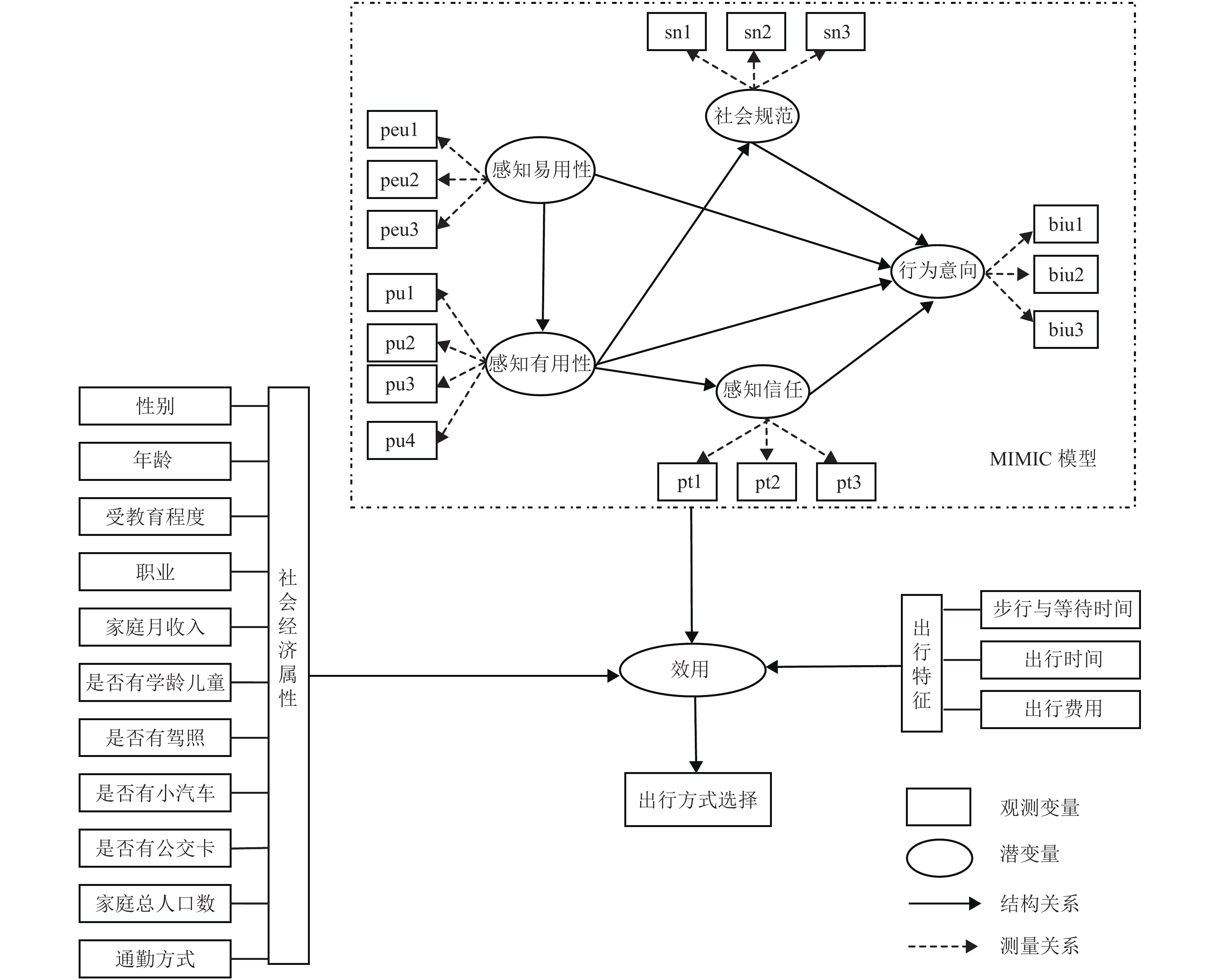
 下载:
下载:
 百度学术
百度学术
